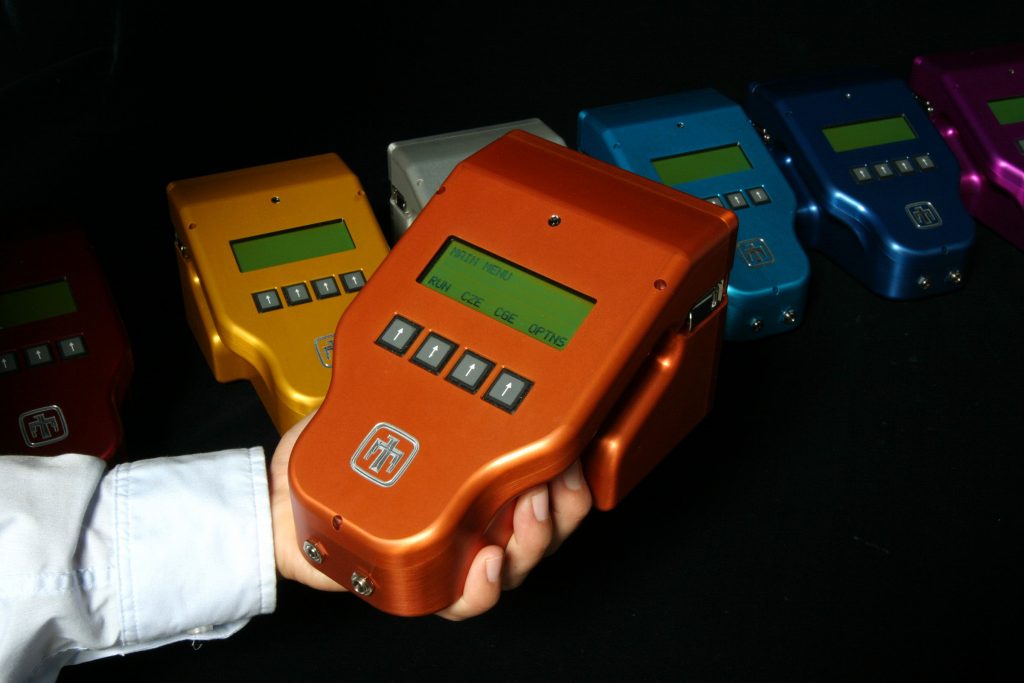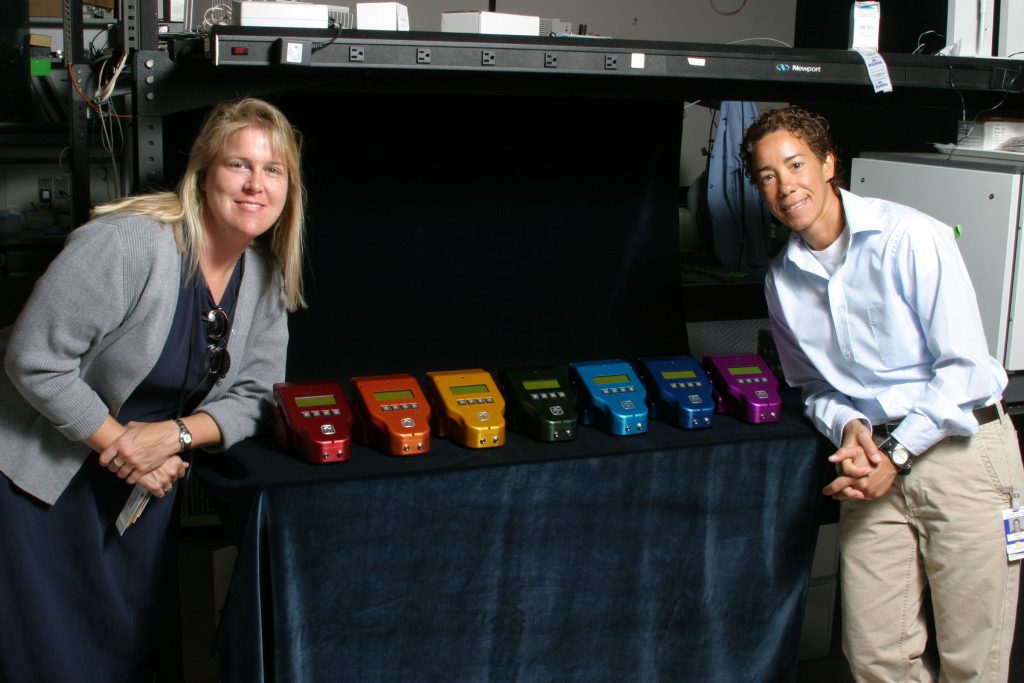
LIVERMORE, Calif. — Sandia National Laboratories has developed a series of compact, hand-held detection systems that place the capability of a fully functional chemistry laboratory at the fingertips of a trained field operator. Sandia is actively soliciting industry partners to license, manufacture, and sell its µChemLab™ (or, “MicroChemLab”) system.
Sandia’s chemical-analysis system, which can rapidly detect and analyze toxic agents, has been designed, demonstrated, and tested by Sandia researchers for several years. While Sandia developed the systems for homeland security, defense applications, war fighters, and first responders, a variety of applications and near-term commercialization opportunities exist in markets such as air and water quality, medical diagnostics, biotechnology, and industrial process control.
The variations of the system are as follows:
µChemLab™ BD (Bio-Detection). This liquid-phase system discriminates proteins to detect and identify biotoxins, viruses, and bacterial agents. The first generation of this system was taken to the Defense Science and Technology Laboratory at Porton Down, England last year to test its ability to detect biotoxin variants. It successfully detected seven different forms of ricin and could distinguish between two staphylococcal enterotoxin variants. Results of the field trial influenced designs for the second generation prototype, unveiled late last year. The “Gen II” system has undergone extensive lab testing, demonstrating nanomolar sensitivities and 10- minute analysis times. Field tests are scheduled for this Fall.
The µChemLab™ BD will be on display at this week’s MicroTAS 2003 conference at Squaw Valley, Calif., where Sandia’s technical and business staff will be available to discuss system capabilities and partnership opportunities. Information on MicroTAS 2003 can be found at www.microtas2003.org.
µChemLab™ CD (Chemical Detection). Two gas-phase systems, one hand-held and one autonomous, can be used for the detection of chemical warfare agents and a selection of toxic industrial chemicals, explosives, and organic solvents. The hand-held gas-phase system has been tested with nerve and blister agents at Edgewood Chemical and Biological Center and at the Hazardous Spill Facility at the Nevada Test Site using simulants that have been explosively released. In addition, two of these hand-held units have been delivered to the U.S. Army Soldier Biological and Chemical Command for testing.

A stationary gas-phase system is currently deployed in the Boston subway system and has performed more than 100,000 tests with no false positive readings. This autonomous system performs analyses every two minutes around the clock.
Companies with the technical capability and manufacturing capacity to produce µChemLab™ for government and commercial applications are encouraged to contact Sandia for information on licensing. Explains Jill Micheau, a business development associate at Sandia: “Our traditional government sponsors fund R&D activities, not product development or commercialization. To assure that our µChemLab™ technologies successfully transition from the laboratory to the market, we are seeking industry partners to provide capital and expertise.”
Micheau said potential industry partners might help to further existing Sandia technologies, develop real-world products, or manufacture, market, and service complete µChemLab™ systems or components. These technologies may also be of interest to teams responding to the recent call for proposals by the Homeland Security Advanced Research Projects Agency (HSARPA). HSARPA, which funds research and development in private industry, is accepting proposals for “Detection Systems for Biological and Chemical Countermeasures.” Information on the HSARPA announcement can be found at wwww.bids.tswg.gov. Those submitting white papers are encouraged to do so by October 24.
Additional information about µChemLab™ technologies and partnership opportunities at Sandia may be found at http://www.ca.sandia.gov/industry_partner/MicroChem_partnerships.html or by emailing CA-Partnerships@sandia.gov.

